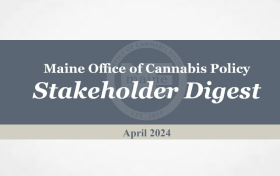As our readers are aware, we look at developments in California’s cannabis industry differently than most. AB 97 and SB 97 were signed into law by Governor Newsom on July 1st. These Bills address expiring provisional licenses and add a new tool for law enforcement to use against unlawful cannabis activities. We applaud the Legislature and the Governor for trying. However, these Bills merely assure that the chaos will continue. These Bills address none of the causes of the chaos in California’s cannabis industry.
As we have previously described, CalCannabis’ actions are some of the principal causes of the chaos. See Carrot and Stick! and California Chaos Causes. CalCannabis is also a major beneficiary of AB 97 and SB 97. These Bills give CalCannabis time to clean-up the mess it has created with the licensing of cannabis cultivation. Unfortunately, CalCannabis is likely to use this additional time to wreak more havoc unless the Bureau of Cannabis Control (“BCC”) exercises control over CalCannabis.
How did CalCannabis go astray? This question is easy. CalCannabis was tasked with the licensing of cultivators in the Medical and Adult Use Cannabis Regulation and Safety Act (“MAUCRSA”). CalCannabis decided it should do more.
CalCannabis took upon itself the task of regulating cannabis cultivation at the state-level. CalCannabis usurped the authority of BCC. BCC is expressly tasked in MAUCRSA with “the power, duty, purpose, responsibility, and jurisdiction to regulate commercial cannabis activity . . . .” [Business and Professions Code (“B&P”) §26010.5(d)]
CalCannabis was not tasked with the regulation of cannabis cultivation. CalCannabis was assigned two tasks in MAUCRSA. CalCannabis was assigned the task of administering the provisions of MAUCRSA “related to and associated with the cultivation of cannabis . . . .” in the first sentence of B&P §26012(a)(2). CalCannabis was assigned the task of licensing cultivators in the second sentence of §26012(a)(2). Nothing in MAUCRSA grants CalCannabis authority to regulate cannabis cultivation or any other commercial cannabis activity.
CalCannabis usurped BCC’s authority. BCC allowed CalCannabis to usurp its authority. BCC abdicated its “power, duty” and “responsibility” under MAUCRSA to regulate commercial cannabis activity. BCC was derelict in the performance of its responsibilities in allowing CalCannabis to usurp its authority and to create chaos in the licensing of cannabis cultivation.
CalCannabis made licensing a difficult, time-consuming and expensive process instead of a simple and easy process. CalCannabis made the licensing of existing cultivators especially onerous. Such licensing should have been the quickest and easiest. The consequences of the course of action taken by CalCannabis were inevitable. The chaos created by CalCannabis was predicted by all except the most conceited thinkers.
CalCannabis is a governmental agency. Governmental agencies are established to grow and prosper. Growth for a governmental agency means finding more matters to administer and more details to address. An agency with more demands on its resources needs a bigger budget. A bigger budget, of course, fertilizes further growth. The growth of a governmental agency will continue until oversight forces the agency to focus on its objectives instead of its processes.
CalCannabis was assigned the task of licensing cannabis cultivation. CalCannabis should have issued a license to every cultivator with local approval long ago.
BCC is the lead agency for the regulation of cannabis in California. BCC is responsible for the mess CalCannabis created. BCC allowed CalCannabis to run amuck. The mess that CalCannabis created is BCC’s mess to clean-up. The open question that will be answered by the passage of time is whether BCC will be able to clean-up the mess CalCannabis has created. AB 97 and SB 97 provide time to clean-up this mess, but the clean-up requires foresight and judgment. Neither CalCannabis nor BCC have as yet displayed substantial foresight or judgment in connection with the licensing of cannabis cultivation.
Is it reasonable for the Legislature to anticipate BCC will be able to clean-up a mess that the agency failed to prevent from being created? This question reminds me of a rhetorical question an early mentor regularly asked me, “Why is there always enough time to correct an error, but never enough time to prevent the error from being made?”
Let’s look for a moment at the mess instead of the cause of this mess. What does it mean to extend provisional licenses and to allow the renewal of extensions as provided in SB 97 and AB 97? We started over a year ago with applications and temporary licenses. The arrangement morphed into provisional licenses. Provisional licenses can now be extended and these license extensions can be renewed.
Cultivation licenses are annually renewable licenses in which a licensee acquires no property rights. What does it mean to extend and renew provisional licenses that were issued because CalCannabis failed to efficiently issue annually renewable licenses? CalCannabis has already resurrected Milo Minderbinder and Catch-22 in the agency’s licensing of cannabis cultivators. The Legislature has either extended the insanity or given BCC the time necessary to clean-up the mess with AB 97 and SB 97.
The creation of an easy path for cannabis cultivators to legally grow solves only one problem. BCC must also make certain it remains worthwhile for cultivators to legally grow. Worthwhile for cultivators means profitable. BCC must make it reasonably easy for licensed growers to be profitable. An additional law enforcement tool may discourage unlicensed cultivation, but it will not aid in making licensed cultivation profitable.
California will always have a substantial underground cannabis industry. [See Reasonable Rules? ] California should consider its regulation of cannabis is successful when a substantial majority of retail commercial cannabis sales are made through reporting retailers. California does not appear close to achieving such a goal. [See CalCannabis Licensing Debacle?] Both underground cultivation and legal cultivation are expanding at the present date. Both will continue to expand as long as both are profitable.
MAUCRSA created cannabis distributors as a choke-point to control cannabis distribution and to facilitate the collection of Cannabis Cultivation Tax (“CCT”) and Cannabis Excise Tax (“CET”). The California Department of Tax and Fee Administration (“CDTFA”) has discovered the great chasm between hoping something will be so and making something so. Distributors are largely responsible for the black holes into which CCT and CET disappearing.
We have written multiple articles regarding the actions CDTFA must take to improve CCT and CET collection. See [Key to Success for California Cannabis Businesses – Managing Tax Liabilities] and [ It’s the Math]. We communicate regularly with CDTFA. We will continue to do so. Taxes are part of the cost of doing business in the legal market. Prudent business management includes planning for the accurate reporting and payment of taxes. Taxes cause pain when the tax liability comes as a surprise. We specialize in making certain our clients are never subjected to such surprises.
Distributors have proved a barrier to the licensing of cannabis cultivation in addition to being a cause of tax collection slippage. The distributor barrier to the licensing of cultivation has created a dilemma for BCC and CalCannabis. Improved CCT and CET collection by CDTFA will contribute to solving this dilemma, but only slightly. Unlicensed cannabis cultivation is also untaxed cultivation. Avoidance of the payment of taxes is a significant incentive for unlicensed cultivation. The profits that distributors take out of the movement of cannabis from cultivators to consumers increase the disincentive to being a legal grower.
Distributors are using their choke-point control over the flow of cannabis to squeeze greater profits out of licensed growers. The use of choke-point control by distributors to enhance their profits weighs more heavily on smaller growers. Not surprisingly distributors even engage in predatory business practices. The difficulty of operating profitably as a licensed grower because of the choke-point control of distributors has created the dilemma facing BCC and CalCannabis. The more successful distributors are in their operations, the more difficult it becomes to convince independent cultivators to be licensed.
Grower ownership of a vertically integrated cannabis business structure shifts financial power back to the owner-growers. Some growers are trying to move in this direction. Distributors are aware of the financial advantages of integrated business relationships. Most distributors are moving in this direction.
MAUCRSA provides an elegant solution for growers that has not been widely utilized. A vertically integrated cannabis business structure owned by growers through a Cannabis Cooperative Association is financially more efficient than any other integrated cannabis business structure.
We will write more about the use of Cannabis Cooperative Associations on another occasion.

















